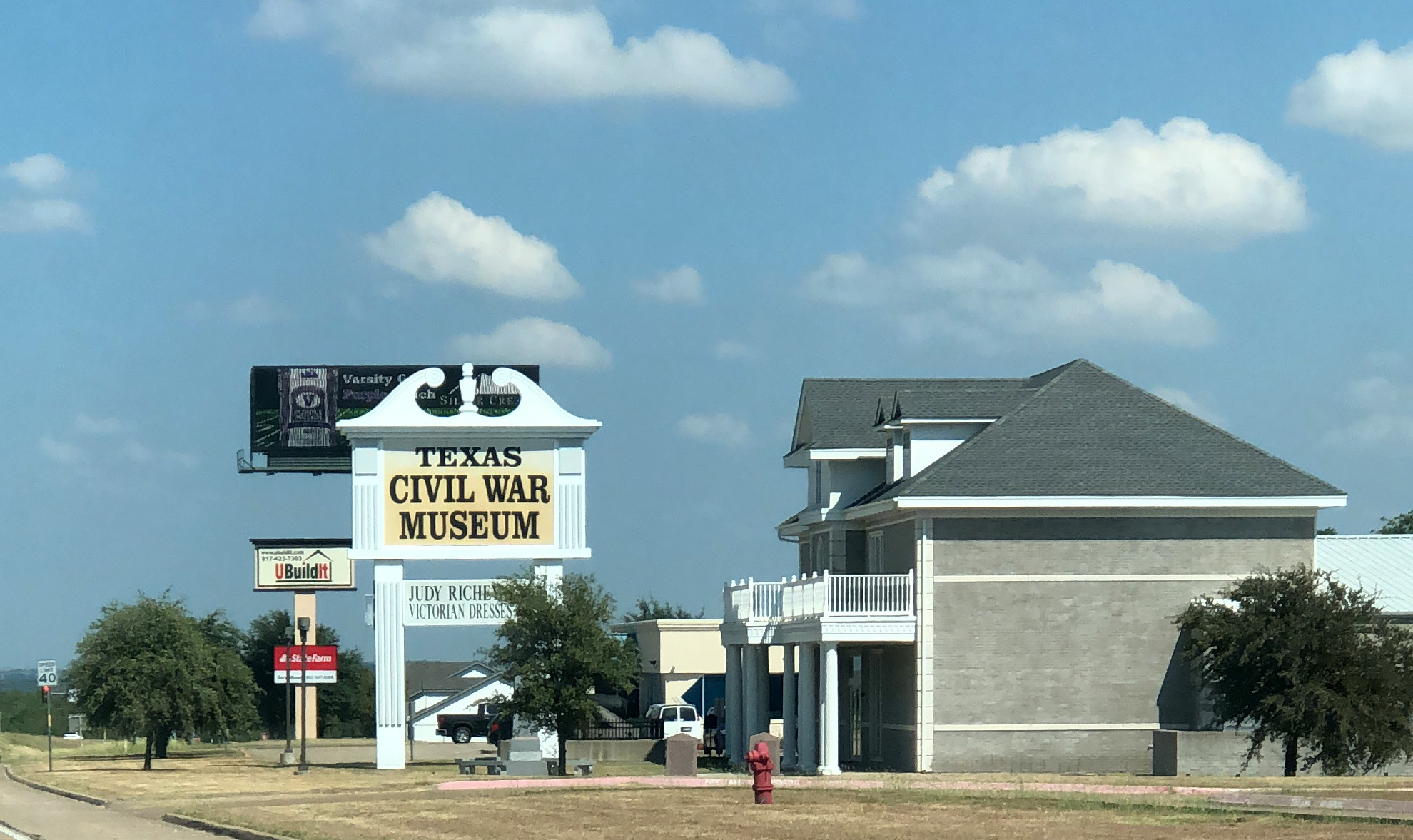
The Texas Civil War Museum, White Settlement, Texas.
I visited the Texas Civil War Museum in White Settlement, Texas last October. It’s at the Silver Creek exit off I-820 just west of Fort Worth, an exit I’ve taken since the early 2000s on my way to the Hip Pocket Theatre. My daughter has been in shows at Hip Pocket, and we’ve come to know the folks at the theater pretty well.
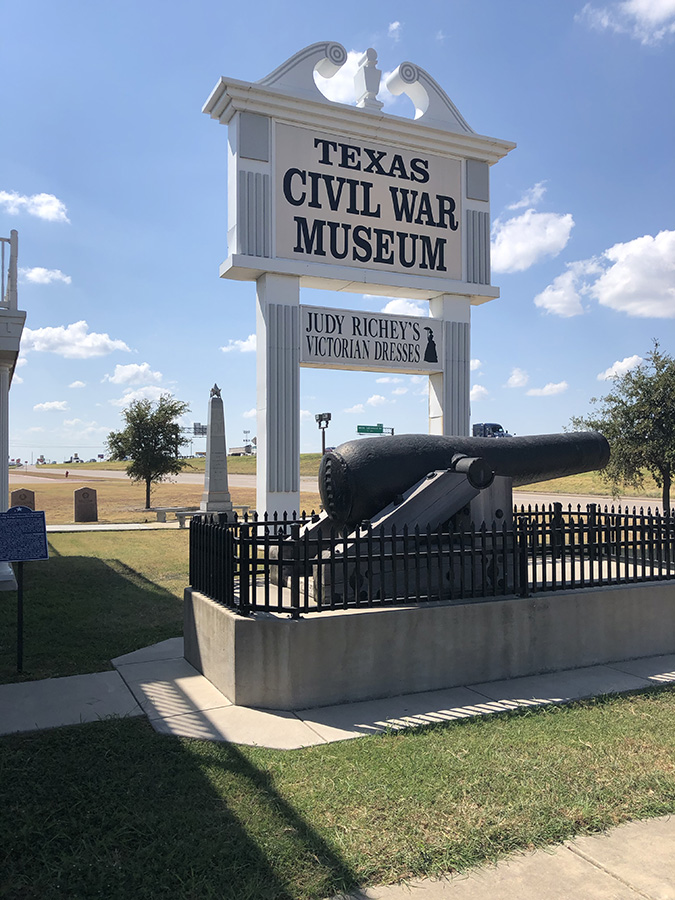
Entrance to the Texas Civil War Museum with a 10-inch-bore Confederate columbaid long-range smoothbore gun, which points toward the highway.
We often mused about what it would be like for two Black people to walk into a museum that celebrates the Confederacy, in a city called White Settlement. My visit to the museum, which has only been around since 2006, came a month after the Robert E. Lee statue in Dallas’ Turtle Creek Park (formerly Lee Park) was removed by the city of Dallas.
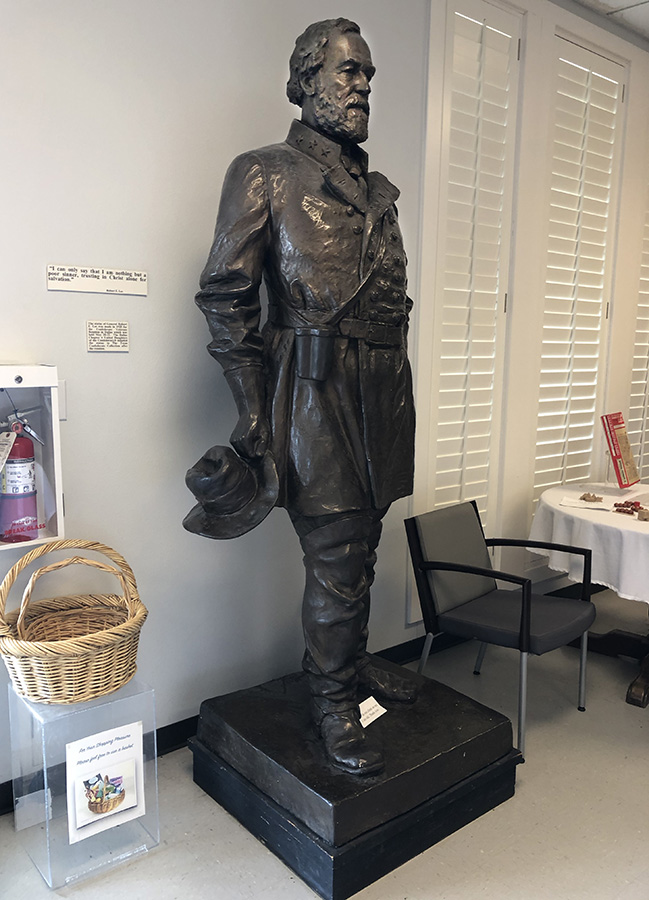
A statue of Robert E. Lee at the Texas Civil War Museum, White Settlement, Texas.
The statue removal was prompted by the previous national debate over Civil War Confederate monuments. That debate was reignited when tiki-torch bearing protesters in Charlottesville marched to protect their own Lee statue, and a suspected white nationalist named James Fields, Jr. drove into a crowd of counter protesters, killing 32-year-old Heather Heyer. Last July, Fields was convicted and sentenced to life in prison plus 419 years after pleading guilty to 29 of 30 federal hate-crime charges.
I didn’t know what to expect on my visit, and was prepared for the worst.
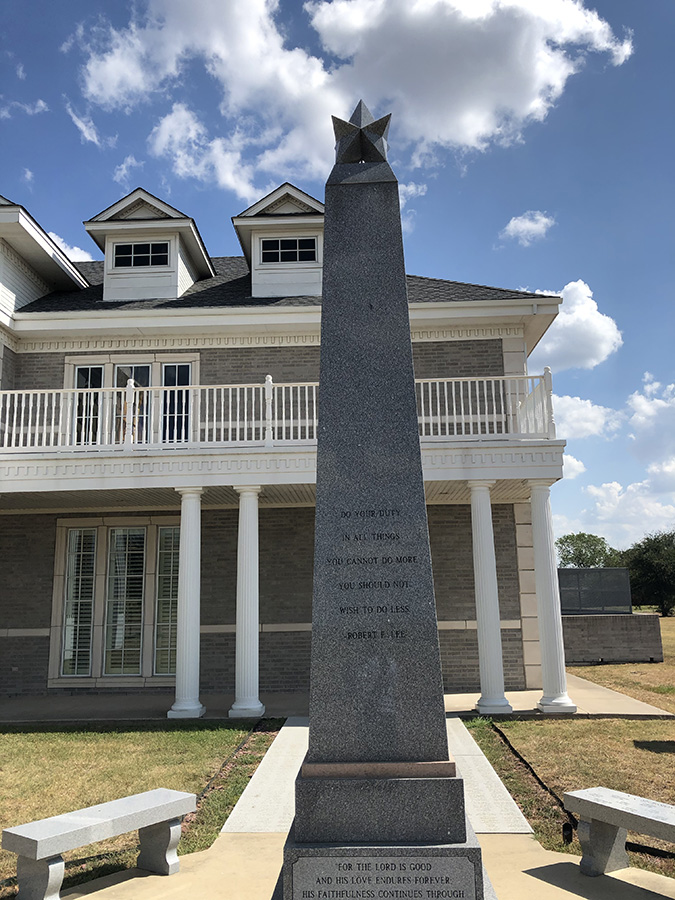
A monument on the front lawn of the Texas Civil War Museum, White Settlement, Texas.
The foundation statement on the website reads:
“The men and women represented in the TCWM may have had nothing more to leave to us and to those who come after us except reminders of a heritage very rich in honor and glory. The ideas of liberty and freedom are fundamental lessons that must be taught, learned, and defined for each generation.We have the opportunity to make a difference. We have the responsibility to not only educate our children but to remember the sacrifices of those who came before us. We invite you to partner with us to ensure the propetual telling of this uniquely American story.”
But I had to immediately ask myself: Whose heritage? What honor, and what glory? Outside of Harriet Beecher Stowe’s Uncle Tom’s Cabin (1st edition), which the display text points out as stoking divisions and making slavery “one of the major issues that led to civil war,” there are scant references to slavery at the Texas Civil War Museum. As far as I could see, there wasn’t a single display, exhibit, artifact, or reference to enslaved people from Africa, or any account of the terror of slavery.
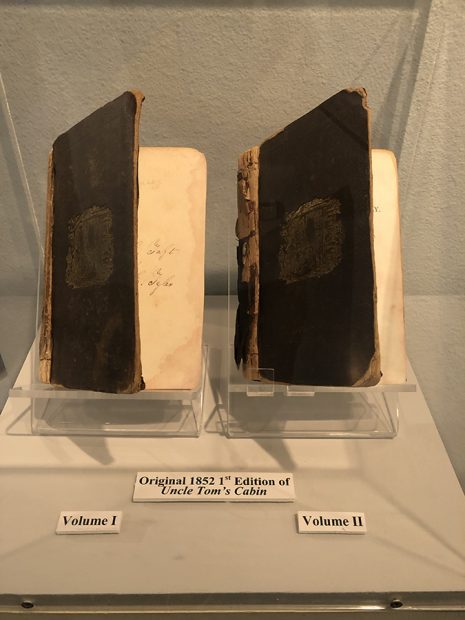
Harriet Beecher Stowe’s ‘Uncle Tom’s Cabin’ (1st edition), which the display points out as stoking divisions and making slavery “one of the major issues that led to civil war. The Texas Civil War Museum, White Settlement, Texas.
Neither was there mention of lynchings, of what it was like to be enslaved, nor images of any Black person anywhere in the building. I found it impossible to find any of the ideals emblazoned on a banner from the Texas Confederate Museum Collection, which read “Historical, Educational, Benevolent, Patriotic.” It certainly didn’t jibe with “the responsibility to educate our children,” that is part of the Museum’s statement. There is a lot of missing history here, and the “ideas of liberty and freedom” are directed only to the descendants of people who are honored here. But the “Memorial” aspect of the banner, a memorial to the Confederacy, was everywhere.
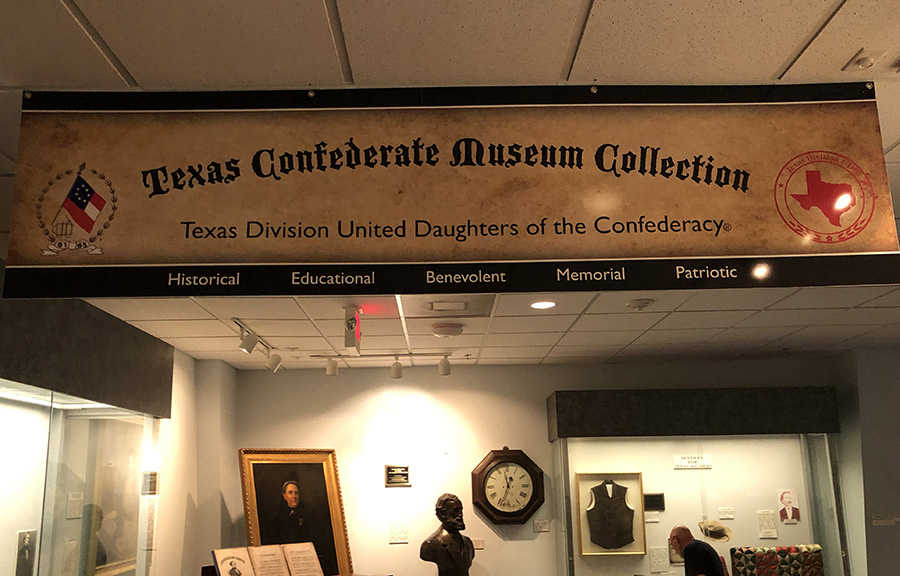
A large banner and a bust of Jefferson Davis at The Texas Civil War Museum, White Settlement, Texas
In some of the section exhibits were signs that asked: “Was the South Ready for War?” The signs then listed a comparative logistics chart of troop strength, population, equipment or other metrics suggesting that perhaps if the South were better prepared, they would have won the war. What the exhibits do not speculate on is what that would’ve meant for the 3,950,531 enslaved people in the South.
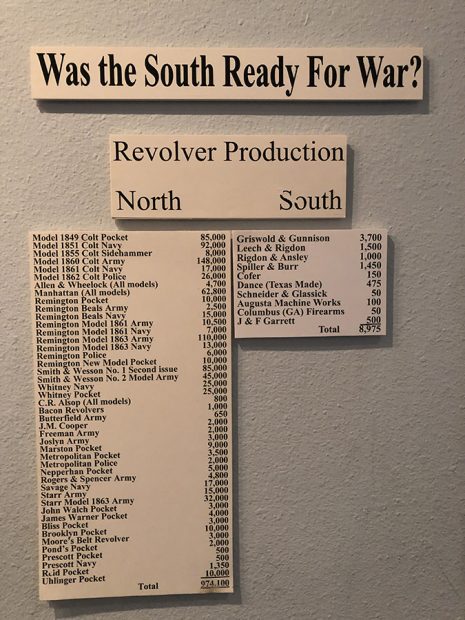
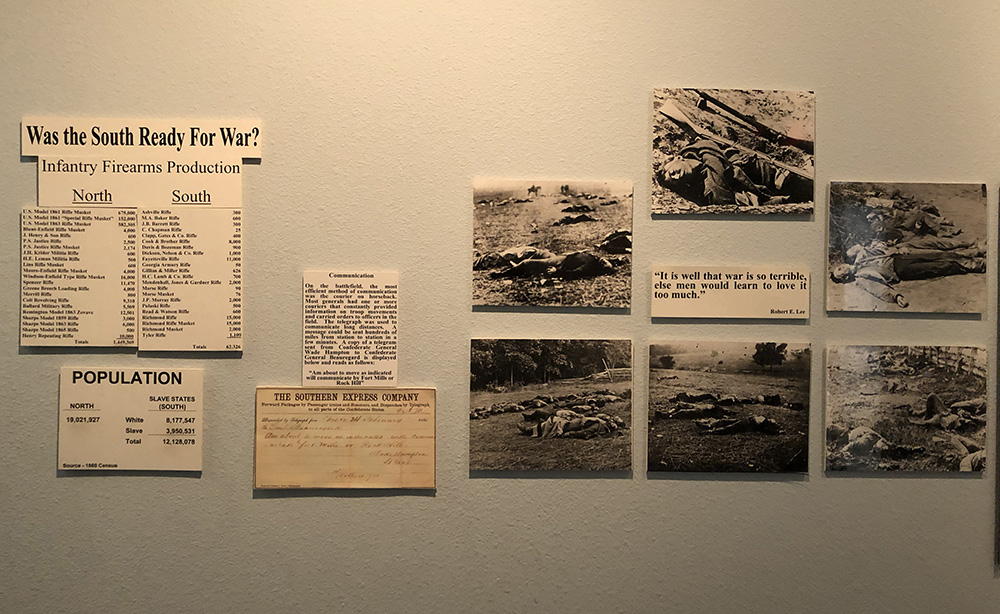
There were other text-based curiosities here that I had to look at twice, to make sure I was reading correctly. For instance, posthumus medals of honor were still being given to dead Confederate soldiers as late as July, 23, 2017, by the Confederate States of America. I didn’t know the Confederate States of America was still around.
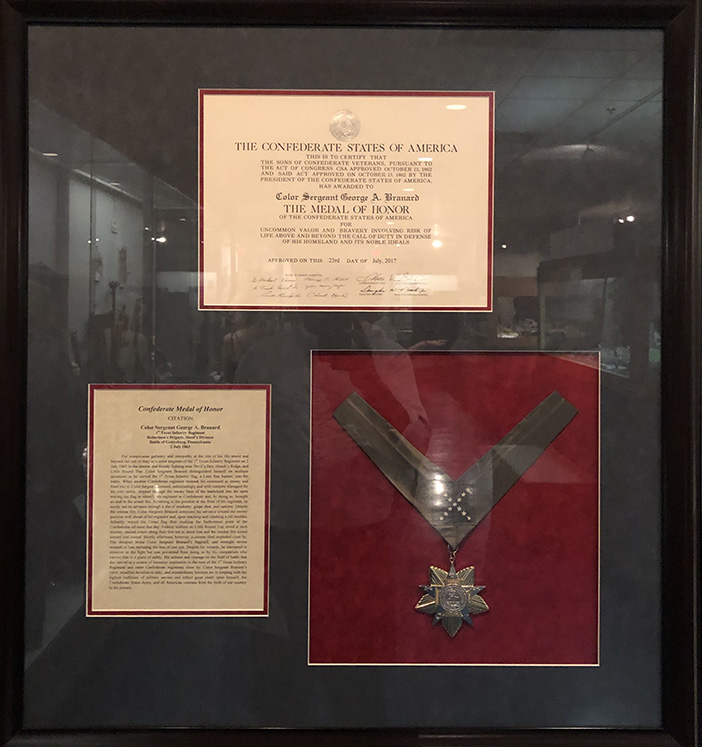
A posthumus medal of honor displayed at The Texas Civil War Museum, White Settlement, Texas.
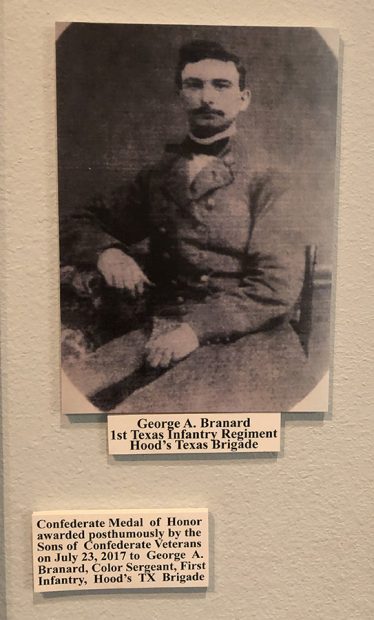
A posthumus medal of honor was given to George A. Branard, shown here. The Texas Civil War Museum, White Settlement, Texas.
There were also cut-outs of both Confederate and Union soldiers at the gift shop/reception area. As well as bobble heads of strange bedfellows.
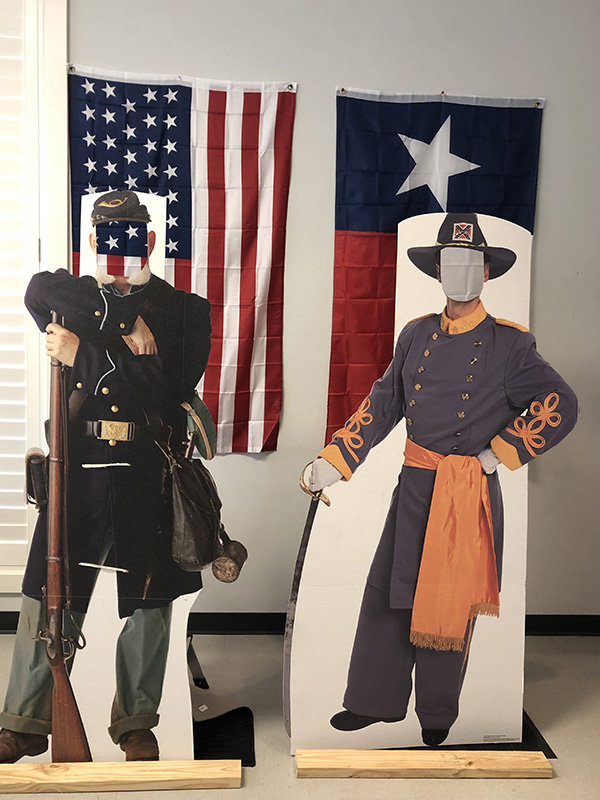
A photo-op cutout area near the entrance of the Texas Civil War Museum, White Settlement, Texas.

Elvis, Lee, Grant, Lincoln, and Wayne, at the front counter of the Texas Civil War Museum, White Settlement, TX.
It has been almost a year since my visit, and to say a lot has happened in the 10 months since is an understatement. One such thing, the killing of George Floyd at the hands of Minneapolis police, has led to protests against police brutality and institutionalized racism across America. What has also followed is a renewed resolve to remove the symbols of the Confederacy represented by statues of its heroes, its flag, and representations in art, music, and literature.
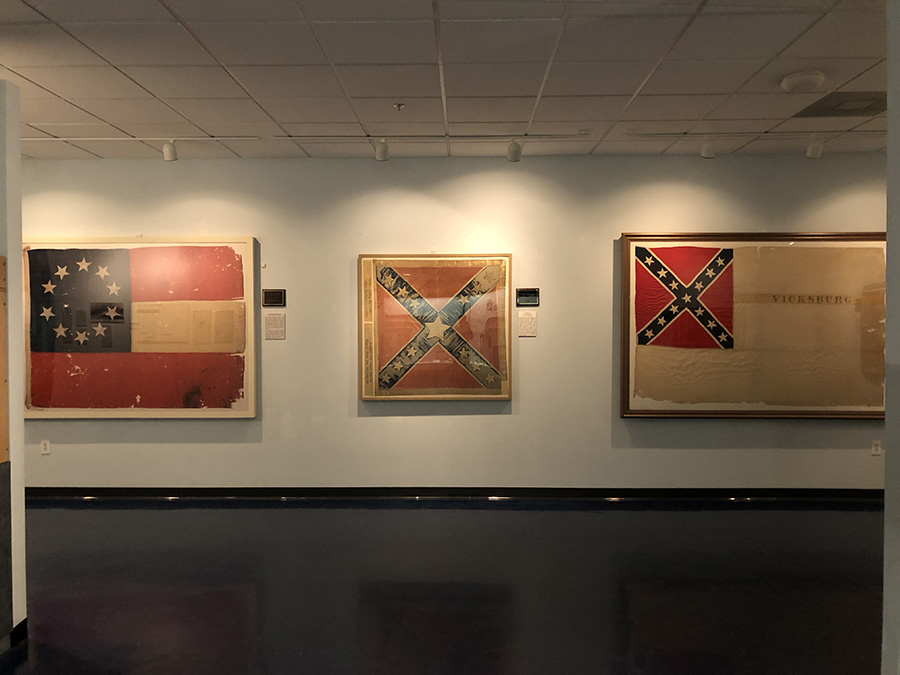
Confederate Flags on display at the Texas Civil War Museum, White Settlement, Texas.
On June 28 in Mississippi, the state House voted 91-23 and the Senate 37-14 to approve the removal of the Confederate emblem of the stars and bars from its state flag, a fight that began way back in April of 1982. John Hawkins, an African American cheerleader at Ole Miss (Mississippi State University) was asked if he would follow the tradition of the cheerleading squad and run the field carrying the banner. He said no, and the fight began. There is a really great podcast about it here.
Confederate statues in the US South have also been rapidly coming down, from Virginia to South Carolina, Kentucky, and here in Texas, to name a few states. It remains to be seen how this and other Civil War museums will respond to these changes, if at all.
Some have suggested that all the toppled statues, monuments, plaques, and flags be placed in museums or other more appropriate locations, but to what end? Many of the names, symbols, and banners that exist to celebrate the heritage and legacy of the Confederacy have also been proudly and ominously erected toward the terrorizing, intimidation, and murder of Black folks, and walking through the Texas Civil War Museum was painful, demoralizing, and difficult. I can’t imagine how any Black visitors here (I imagine some of them have been Black) could feel much differently.
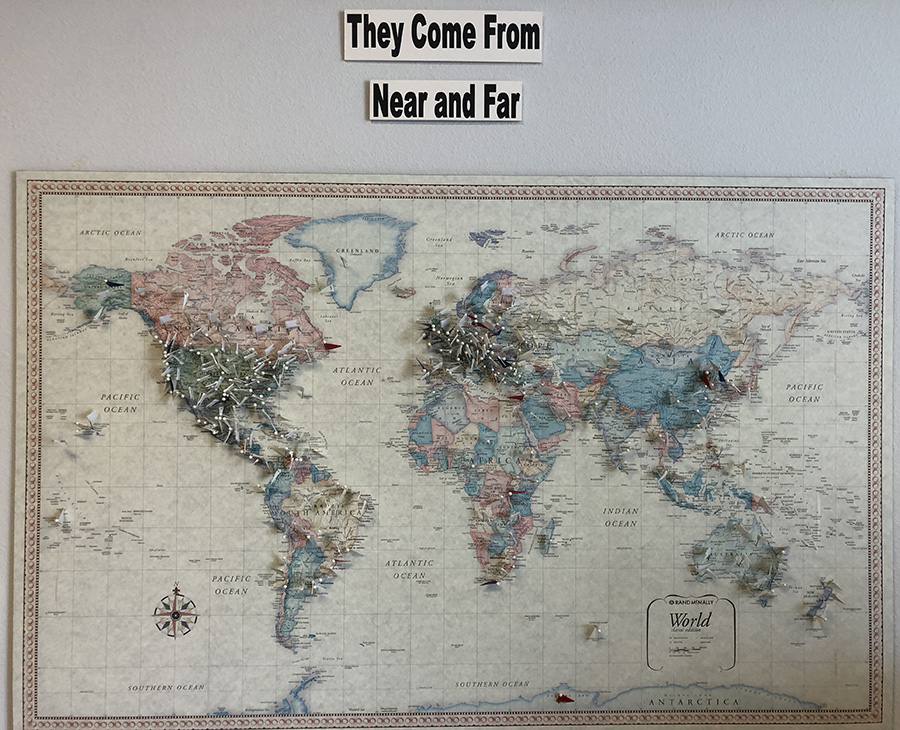
Visitor map at the Texas Civil War Museum in White Settlement, Texas.
For more images from my visit, please see below.
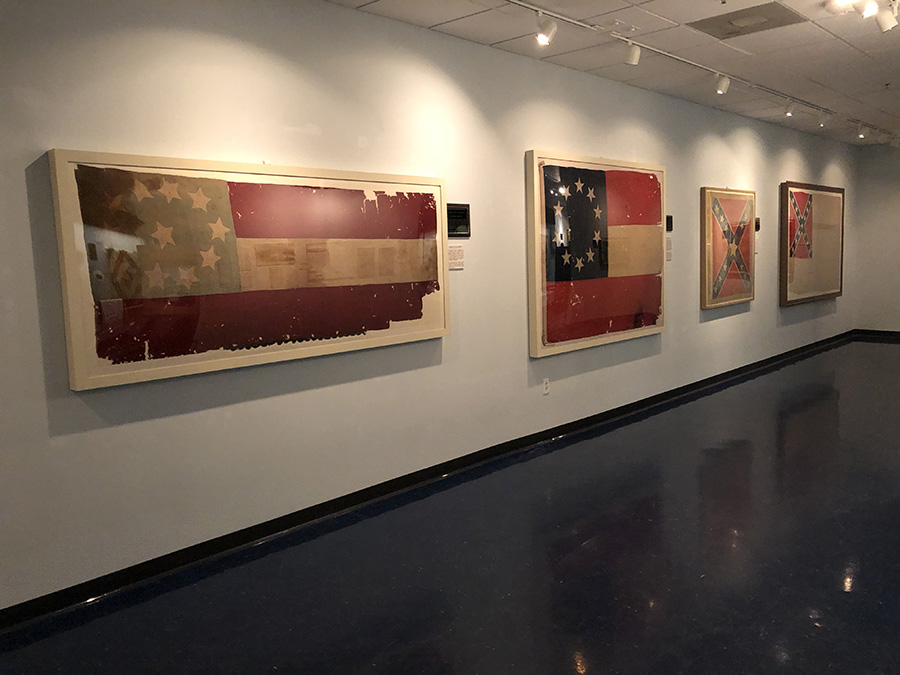
More Confederate flags on display, the Texas Civil War Museum, White Settlement, Texas.
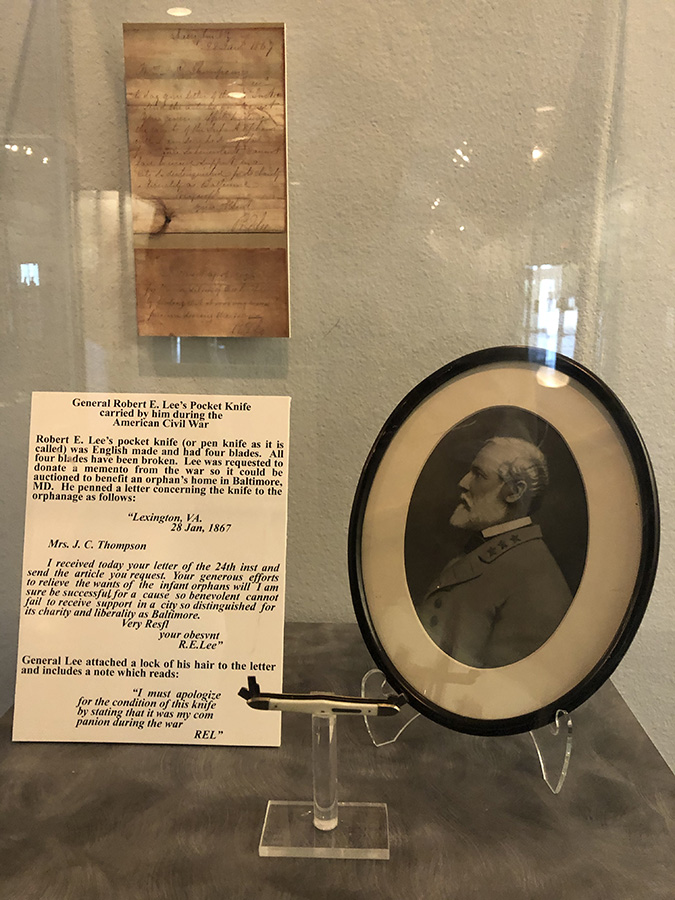
Robert E. Lee’s pocket knife at the Texas Civil War Museum, White Settlement, Texas.
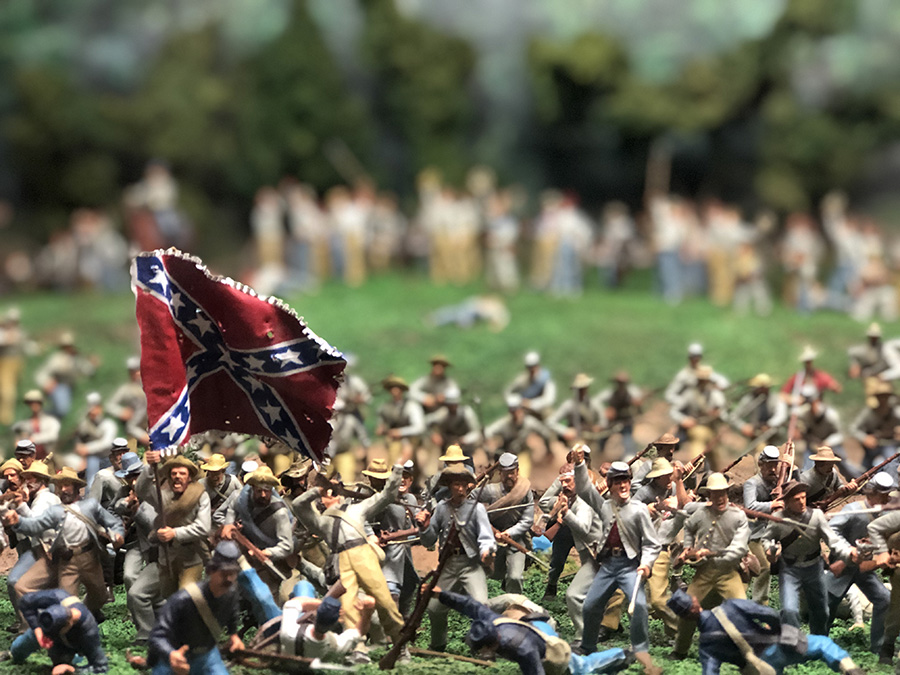
Diorama built by students from Highland High School in Gilbert, Arizona, at the Texas Civil War Museum, White Settlement, Texas.
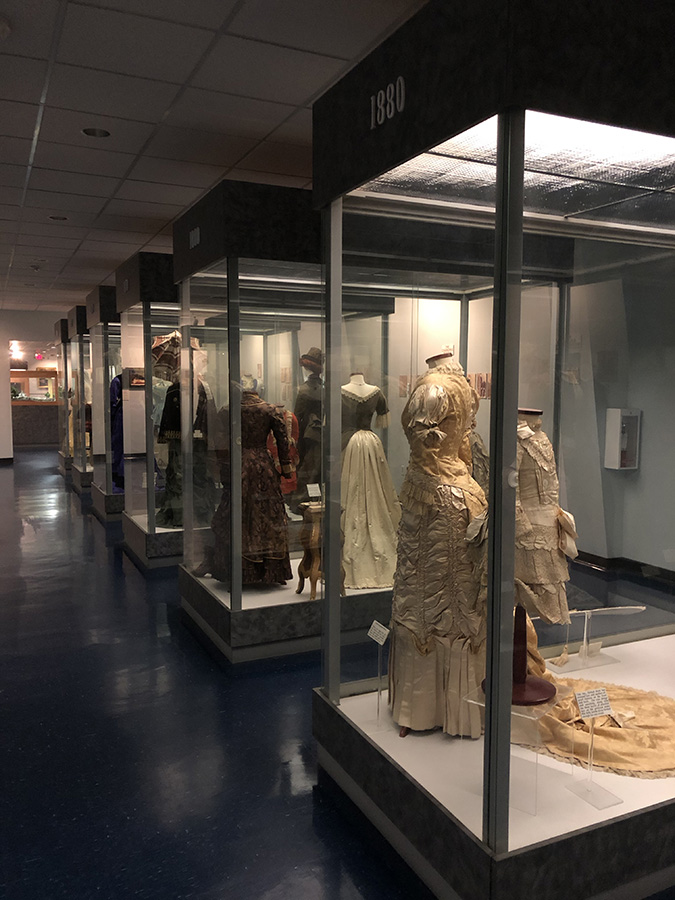
Rows of Victorian dresses from he Judy Richy collection, on display at the Texas Civil War Museum, White Settlement, Texas.
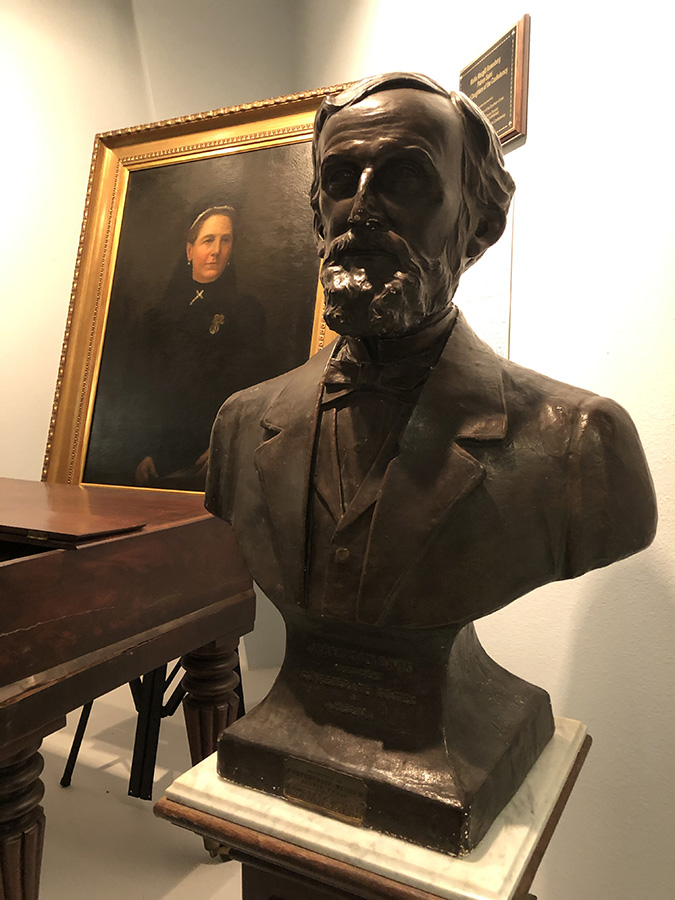
Bust of Jefferson Davis on display at the Texas Civil War Museum, White Settlement, Texas.
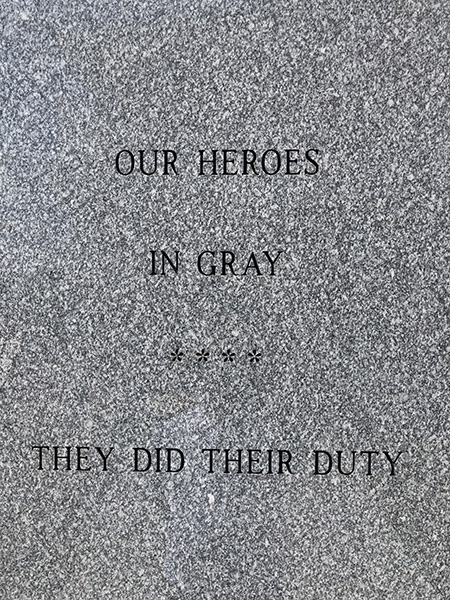
Detail of monument at the Texas Civil War Museum, White Settlement, Texas.
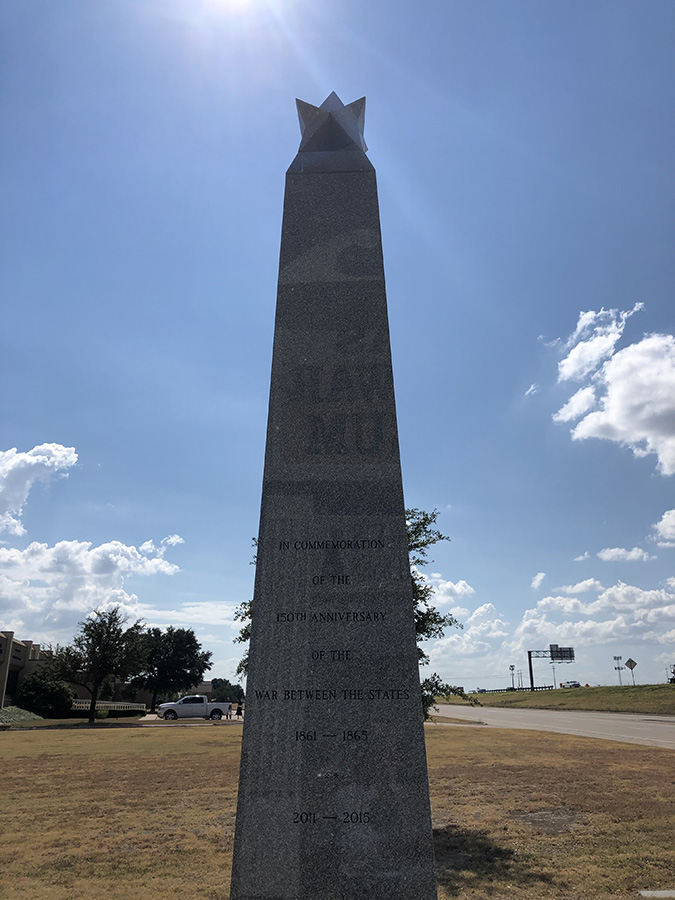
A Confederate memorial at the Texas Civil War Museum, White Settlement, Texas.



14 comments
I’ve never been to this museum.ive passed it on the highway numerous times.but I will definitely be stopping soon.
One thing I have noticed is how people have not gotten past 150 years ago. Some people have learned from history But it seems others are still stuck there.
Anything that commemorates the inhumane, hideous and immoral crimes of the confederacy must go.
Thank you for this article. Heartbreaking truth.
When a group of people are unwilling to face truths, they feel the need to erect monuments and buildings in the hope their untruths will be somehow substantiated. I didn’t know this place existed, but I’m not one bit surprised, sadly.
Thank you for writing and publishing this article. I had no idea this museum or town existed until now. What a shock. I immediately thought of Fred Wilson’s Mining the Museum. This story needs to be told, too. There is real potential here to make positive change out of the “history” presented. I don’t think people realize that a significant number of our nation’s public sculptures depicting Civil War figures were erected a long time after that war ended. Many went up more than 100 years later, in the 1960s, in a passive aggressive way, by people who were not in favor of the cause of Civil Rights. I hope this article will result in media attention by other news outlets unaware of the existence of the museum. What’s shocking is especially due to the fact that the museum opened relatively recently, in 2008. The lack of sympathy for the side of justice and the dignity of Black Americans is especially painful given that opening date. There is an opportunity here, particularly now. One thought in closing: As a longtime Texas resident from Chicago, it’s a shame and embarrassment to live in a state with a city named White Settlement. They need to change their town’s name, too.
As Eleanor Heartney might write, our postmodern art world embraces different local modes and flavors. Any dominant narrative that once was is now replaced by the many multiple narratives. Fred Wilson expertly juxtaposed once thought incongruit cultural items within the single space of a museum, amoung others. Currently, our society is doing its own investigatory look not only on our cultural objects a significance but also the seemingly competing philosophies. I am hesitant concerning some of the recent modalities of removal. In contrast to Fred Wilson’s scrupulous examinations, they may be asserting the “truths” of another narrative rather than revealing the mutiple “truths” for the viewer’s own keen, perhaps discomforting, examination. Where as Ghandi would say, “Be the change that you wish to see in the world,” Gamaliel would say, “For if their purpose or activity is of human origin, it will fail. But if it is from God, you will not be able to stop these men; you will only find yourselves fighting against God.” I fear what would happen if we find ourselves in a world where no museum offered us discomfort.
This museum is far from anything presenting multiple truths. There is a difference between discomfort and promoting a “truth” that is rooted in someone’s right to exist (thinking of James Baldwin and his opinions quote.) This Museum is essentially promoting what is the foundation of much of America’s domestic terrorism.
As a child raised by Civil Rights CORE members, when I moved to Texas I was appalled by the rampant Texan racism! Gun totting teens in big trucks with confederate flags was so backwards! It got to the point I wouldn’t even listen to country and western music.
Glorifying U.S. traitors and men who were happy to sell black people like their cattle is a embarrassing and pathetic story, not glory! I’m glad I raised my children to not tolerate this type of thinking OR behavior. We also avoid ALL idiotic re-enactments! Or should we re-enact the bible’s bloodiest and most crude practices?
Please stop white-washing history. Reality check please. I come from a Catholic family who the KKK would have gleefully killed!
Great article Chris!
I think Winston Churchill gets credit for saying “History is written by the victors”, which is why museums and monuments like these always fascinate me. The Confederacy was objectively the loser. The only explanation for these present day figments, glorifying the Confederacy, is the persistence of racism and hatred.
Though it’s resulted from abject tragedy, I’m thankful for 2020’s national conversation on present-day racial inequity, and the unbroken link to events 400+ years in the past.
My wife and I recently spent an afternoon at the National Memorial for Peace and Justice in Montgomery, AL. I strongly recommend every American visit this place. It’s beautiful from a design and artistic perspective, but it’s purpose goes well beyond that. In my opinion, it properly presents the horrors of American Slavery, and lynchings ensuing thereafter. It is a gut-wrenching experience, and that’s the point. Each US citizen should face, and accept the facts of history, so we can put an end to our shared legacy of barbarism.
Thank you Chris.
I’m not certain if we can end our legacy of barbarism. We can potentially right the wrongs of the past and influence some thinking, but I doubt that the sentiment in its entirety can be eliminated from our human consciousness. I site various, unsynchronous, sources. The first being the number of idealized societies that many a civilization has tried to obtain. The second is Vulcans from Star Trek as they are always in the process of suppressing their emotions the pursuit of logic and avoidance from their primal passionate selves. The third is a sentiment I heard from quotes from American soldiers from the Vietnam War. It went something to the effect that he was questioning whether or not war brought out the worst in people. He reasoned that all humans have those demons inside of you and military training only refined it slightly.
From my limited studies in psychology, I would reason that, because of the eb and flow between self-interest and the benefit of helping others, the barbarism of humans is likewise on a pendulum. We are likely see it in another reincarnation in the next generation, like all human conditions. The question becomes how will we respond this time?
White Settlement, where they drove off the First Nations, and named the streets after them
Compelling and thoughtful article, Christopher. Thank you for this.
Excellent article Chris. I used to pass by this “museum” when it contained just the Victorian Dresses. I guess the dresses got superseded with something more important. (The sign out front says it all.) The mission statement, makes my head spin and I suspect that if I were to visit the museum, I would come away with the idea that we should appreciate our ancestors for their sacrifices. But, should we not question what those sacrifices were for?